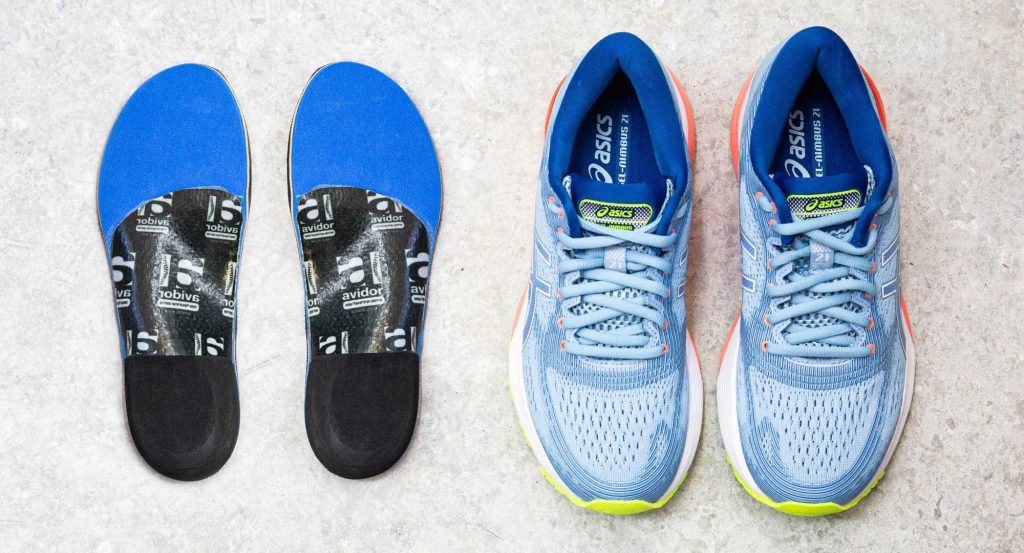Orthotic Insoles as a Means of Injury Prevention
Insoles as a Means of Reducing Injuries in the Musculoskeletal System
By Prof. Moshe Ayalon, Dr. Yiftach Hetzroni, Prof. Meir Nyska
During physical activity, the foot serves as the terminal link in the kinetic chain, absorbing ground reaction forces. These forces enable bodily movement but, under certain conditions, can also lead to injuries within the musculoskeletal system.
The intensity of these ground reaction forces and the significant biomechanical role of the foot in overall body function make it a key factor in preventing injury during movement. When the foot functions properly, it reduces the forces exerted on the body and legs, distributes them optimally, and thereby helps prevent injuries.
Why Do Injuries Occur During Physical Activity?
To understand why injuries are more likely to occur during physical activity, we need to examine how various forces act on our legs in different situations. While standing, the vertical ground reaction force is equal to body weight and is evenly distributed between both feet. During walking, this force is similar in magnitude — approximately 1.1 to 1.2 times body weight. However, the period during which both feet are simultaneously in contact with the ground is significantly shorter while walking, meaning the ground reaction force acts mostly on one foot at a time.
During the stance phase of the gait cycle, different areas of the foot contact the ground at different times. The vertical ground reaction force travels from the heel toward the toes, and each region absorbs the force accordingly. Initial contact is made with the heel, while the peak force occurs at the front of the foot during the push-off phase. Additionally, the magnitude of the ground reaction force varies throughout the step.
To understand the loads exerted on the foot during intense physical activity, consider the following example:
For about 70% of long-distance runners moving at 10–18 km/h, initial ground contact occurs at the heel. Each contact generates a vertical force equivalent to 2.5 to 3 times body weight. At a running speed of 12 km/h, the stride length of a trained athlete is approximately 1.20 meters, meaning each foot strikes the ground 416 times per kilometer. If the runner weighs about 70 kg and each step generates a vertical force of 2.75 times body weight, then each foot absorbs around 80 tons of force per kilometer run.
Under such high loading conditions, even small deviations from proper biomechanical foot function can significantly increase the likelihood of injury.

How Can Abnormal Foot Biomechanics Be Corrected?
There are various types of foot deformities that can impair proper biomechanical function. The most common include excessive or abnormal varus or valgus alignment, high or low longitudinal arches, and forefoot deformities. In many cases, an individual may suffer from a combination of these issues. Typically, hindfoot valgus is associated with a low arch (known as pes planovalgus), while hindfoot varus usually occurs alongside a high arch (pes cavovarus).
Custom orthopedic or sport insoles can often provide an effective solution for these deformities and other biomechanical issues. Insoles are used to:
Reduce the negative effects of excessive pronation
Improve skeletal alignment
Enhance shock absorption
Improve comfort and sensory feedback
Decrease joint forces and torques
Redistribute and reduce pressure on the foot
Support the longitudinal arch
The insoles are placed inside the shoe and help neutralize or reduce the harmful effects of biomechanical deviations, thereby minimizing the risk of sports injuries.
It is important to note that off-the-shelf insoles that are not customized to an individual’s foot structure will not effectively address specific biomechanical deformities. Only insoles that are custom-designed for the patient’s foot can optimally resolve their unique condition.
Another critical point is that some biomechanical issues only appear during movement. Therefore, static evaluations performed while standing may fail to detect them. For accurate diagnosis, it is essential to combine static assessments (during rest or standing) with dynamic evaluations performed while walking and/or running.
Initial Step: Foot Shape Mapping
A crucial first step in designing custom insoles is mapping the foot’s structure. This can be done using several techniques under different weight-bearing conditions:
Non–weight-bearing, with the foot positioned neutrally
Partial weight-bearing, seated, with the foot placed in a mold
Full weight-bearing, standing with equal weight on both feet
Dynamic mapping, during walking
Each technique has its own advantages and limitations. The appropriate method should be selected based on the individual’s clinical presentation.
In addition to capturing the foot’s shape, it’s essential to identify biomechanical dysfunctions — some of which, as noted, may only be revealed through movement. A computerized gait and/or running analysis is highly recommended, along with plantar pressure distribution measurement.
The dynamic data is processed to generate a pressure map showing both force and distribution. The insole is then built using both static and dynamic measurements, allowing for the addition of support elements designed to optimize pressure distribution across the foot and adjust foot positioning, thereby correcting gait and running patterns in accordance with the diagnosed biomechanical issue.
Conclusion
By identifying biomechanical dysfunction in the lower limbs and understanding its impact on the musculoskeletal system, it is possible to significantly reduce injury risk. This is achieved through the customization of insoles that help prevent a wide range of injuries — both during intense physical activity and in daily life.
Contributors to this article:
Prof. Moshe Ayalon – Biomechanics expert, Head of the Biomechanics Lab (services available at all Avidor Insoles branches), Wingate Institute for Physical Education and Sports
Dr. Yiftach Hetzroni – Orthopedic and Sports Medicine Specialist, Meir Medical Center, Kfar Saba
Prof. Meir Nyska – Orthopedic Surgeon, Specialist in Ankle and Foot Disorders, Head of the Orthopedic Department, Meir Medical Center, Kfar Saba